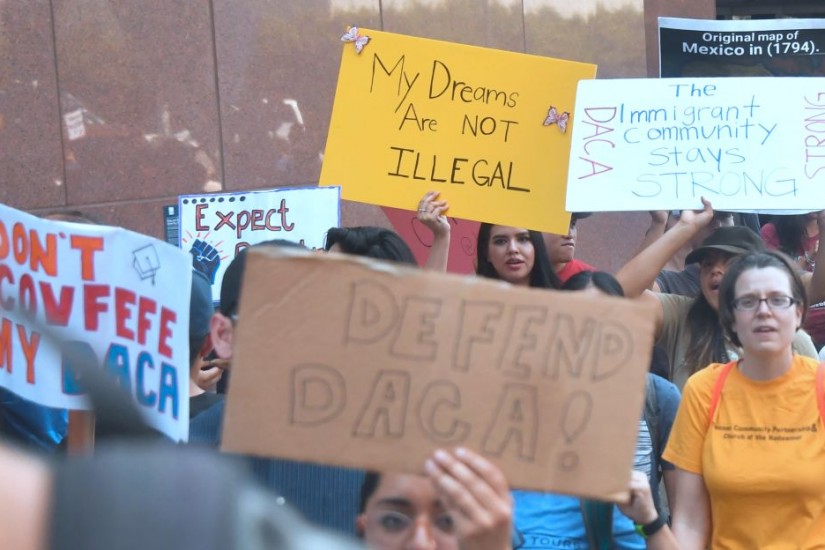Earlier this week, the Trump administration announced its plan to scrap the Obama-era Deferred Action for Childhood Arrivals program, leaving Congress six months to draft replacement legislation. Since 2012, over 785,000 individuals have been approved for the program, which is intended to shield from deportation undocumented migrants who arrived in the United States as children. According to the liberal Center for American Progress, roughly 84 percent of DACA recipients identify as Latino, 9 percent as Asian, 2 percent black and 2 percent white.
This racial configuration matters, because race often serves as the ground upon which questions of belonging and claims to citizenship are decided in this country. Eliminating a program whose beneficiaries are overwhelmingly people of color demonstrates the continued potency of political appeals to white racial resentment. But it also illuminates the politics of forgiveness, setting the vulnerability of DACA recipients in sharp contrast to the American tradition of unconditional white amnesty. In short, the history of amnesty in the United States is necessarily a history of race itself.
Unconditional white amnesty, as I argued in Black Perspectives, can most clearly be seen in the aftermath of the Civil War. In 1868 President Andrew Johnson — a politician with whom Donald Trump is often compared — enacted the most ubiquitous amnesty policy in American history as a way of “re-assimilating treasonous white confederates who had taken up arms against the United States during the Civil War.”
That blanket amnesty built on smaller piecemeal pardons issued in preceding years. From December 1863 to July 1868, Presidents Abraham Lincoln and Johnson issued five proclamations “offering amnesty and pardon to persons who had been or were concerned in the late rebellion against the lawful authority of the Government of the United States.” Though the first five presidential pardons excluded amnesty for a number of high-ranking Confederate officers, Johnson’s Proclamation 179 on Christmas Day of 1868 granted “general amnesty” and unambiguous pardons to everyone who had fought for the Confederacy. By early 1869, over one million white Confederate soldiers were granted full amnesty, a figure that represents nearly 20 percent of the Confederacy’s nonenslaved population.
Race determined civic identity after the Civil War, with whiteness trumping loyalty to country. Johnson’s desire to assimilate people into society did not extend to black Americans. In fact, he labored to exclude them from postwar restitution and civic participation. Just three years prior to Proclamation 179, Johnson overturned Union Gen. William T. Sherman’s Special Field Order No. 15 — an idea conceived by formerly enslaved black ministers in Georgia — to offer 40 acres of land to recently emancipated black persons.
